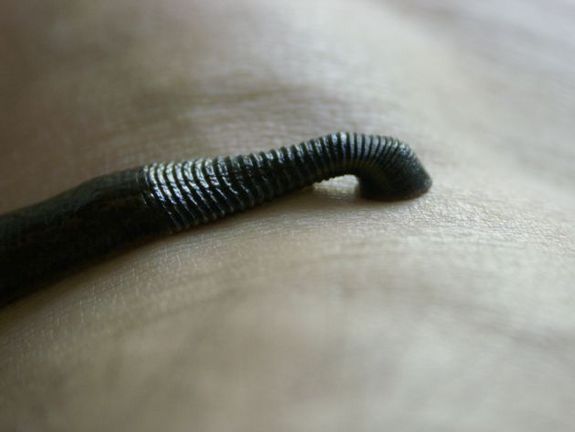Newest Wildlife Tracking Tool: Leeches?

Leeches may be a wildlife biologist's new best friend when in the field.
A team of Danish and British researchers has found that DNA (deoxyribonucleic acid, the genetic code for life) in the blood consumed by leeches can be used to confirm the presence of mammals, particularly shy, hard-to-find or rare ones.
This provides a cheap, simple alternative to traditional tracking tools, from sensor-equipped cameras to hair and feces collection. And, unlike the elusive mammals researchers are often seeking, the leeches come to humans in the hopes of a good meal.
First, researchers tested 20 medical leeches that had eaten goat blood from the Copenhagen Zoo. The leeches contained traces of goat DNA for more than four months after their blood meal, they found. That genetic signature would allow researchers to identify the mammals a leech had come into contact with.
Next, they tested the technique in the field, by catching leeches in a Vietnamese rain forest. Of 25 leeches tested, 21 contained traces of DNA from local mammals, including an Annamite striped rabbit, which has not been seen in the area since its discovery in 1996.
This technique is likely applicable not only in Southeast Asia, but in other areas where leeches live, study researcher Tom Gilbert, a professor at the Centre for GeoGenetics at the University of Copenhagen, said in a statement.
The research appears in the April 24 issue of the journal Current Biology.
Sign up for the Live Science daily newsletter now
Get the world’s most fascinating discoveries delivered straight to your inbox.
You can follow LiveScience senior writer Wynne Parry on Twitter @Wynne_Parry. Follow LiveScience for the latest in science news and discoveries on Twitter @livescience and on Facebook.










